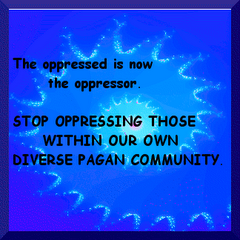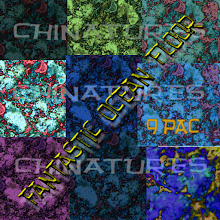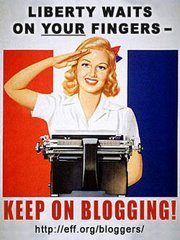In some popularized witch books, Hecate is described as being the goddess of the crossroads and it is suggested that folks leave raw eggs and honey and mishmash in the middle of crossroads so she can swoop down with her hounds [I confess to thinking of black Great Danes here with unnatural vicious fangs] and suck out the the essence of said offering.
In Hoodoo, the crossroads is a powerful thing and second to the graveyard in holding ritual rites.
From the Congo springs the origins of the even-armed cross inscribed by a circle which some pagans use today. It is called a dikenge.
Robert Farris Thompson has explained the meaning of this dikenge. The lines which form the cross touching the circle at the four cardinal directions are birth, early adulthood, old age, and death. The horizontal Kalunga line is the division of the land of the living above the line from the dwelling places of the dead. The Kalunga line inself is the ocean where some of the dead dwell. What is above the line in the land of the living is mirrored below the line, not in the sense of "reincarnation" or the wiccan "As above so below" but more in the sense of opposites. We walk upright on our feet. Dead folks walk on their hands. It is day light here. It is nighttime there. It is opposition in the sense of doing battle when invoking dead people. It is not representative of the four seasons, since the Congo knows only two. [The two seasons in the Congo are "wet" and "dry." Winter, Spring, Summer, Fall are not known there.] The exact center where the two lines intersect is the exact center of the crossroads, the place from which power springs.
The roots of Hoodoo remain firmly entrenched in the African diasporic religions. As the diasporic religions evolved, the crossroads gave birth to more complex crossroads and then a class of entities in Brazilian-style derivatives known as "People of the Crossroads" who are associated with people living street lives.
Sometimes we pagans and heathens and witches and wiccans think we got it going on with our Euro-centric translations of symbolism and hip beliefs about reincarnation. Hoodoo begs to inform us differently, that the people of the Congo used the equal-armed cross in a circle long before the people of Europe were even thought about. That this dikenge in its' purest form does not teach reincarnation. And that the phrase "As above so below" was borrowed by us from other ancient peoples and indeed it has a much deeper meaning than that which is ascribed to it in popular witch lit.
A big shout-out to Eoghan !
from sapphoq n friends
Any mistakes in this post are my own and are no reflection upon the scholarship of Robert Farris Thompson. Readers who are curious about Hoodoo are advised to consult with those who live Hoodoo daily. I am just a by-stander in that world.
All rites reserved. You do not have permission to reproduce this essay for any purpose including but not limited to quotation, citation, or review. You do have permission to provide a link to this essay.
In Hoodoo, the crossroads is a powerful thing and second to the graveyard in holding ritual rites.
From the Congo springs the origins of the even-armed cross inscribed by a circle which some pagans use today. It is called a dikenge.
Robert Farris Thompson has explained the meaning of this dikenge. The lines which form the cross touching the circle at the four cardinal directions are birth, early adulthood, old age, and death. The horizontal Kalunga line is the division of the land of the living above the line from the dwelling places of the dead. The Kalunga line inself is the ocean where some of the dead dwell. What is above the line in the land of the living is mirrored below the line, not in the sense of "reincarnation" or the wiccan "As above so below" but more in the sense of opposites. We walk upright on our feet. Dead folks walk on their hands. It is day light here. It is nighttime there. It is opposition in the sense of doing battle when invoking dead people. It is not representative of the four seasons, since the Congo knows only two. [The two seasons in the Congo are "wet" and "dry." Winter, Spring, Summer, Fall are not known there.] The exact center where the two lines intersect is the exact center of the crossroads, the place from which power springs.
The roots of Hoodoo remain firmly entrenched in the African diasporic religions. As the diasporic religions evolved, the crossroads gave birth to more complex crossroads and then a class of entities in Brazilian-style derivatives known as "People of the Crossroads" who are associated with people living street lives.
Sometimes we pagans and heathens and witches and wiccans think we got it going on with our Euro-centric translations of symbolism and hip beliefs about reincarnation. Hoodoo begs to inform us differently, that the people of the Congo used the equal-armed cross in a circle long before the people of Europe were even thought about. That this dikenge in its' purest form does not teach reincarnation. And that the phrase "As above so below" was borrowed by us from other ancient peoples and indeed it has a much deeper meaning than that which is ascribed to it in popular witch lit.
A big shout-out to Eoghan !
from sapphoq n friends
Any mistakes in this post are my own and are no reflection upon the scholarship of Robert Farris Thompson. Readers who are curious about Hoodoo are advised to consult with those who live Hoodoo daily. I am just a by-stander in that world.
All rites reserved. You do not have permission to reproduce this essay for any purpose including but not limited to quotation, citation, or review. You do have permission to provide a link to this essay.



No comments:
Post a Comment